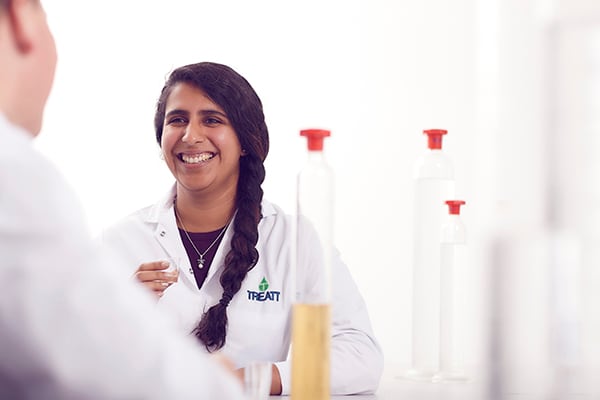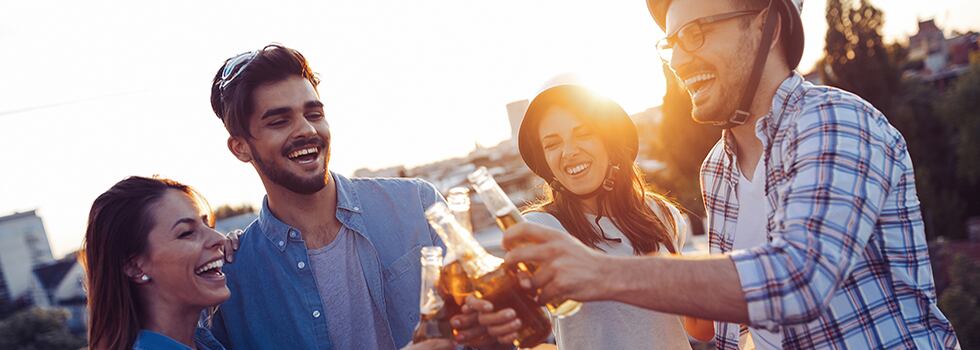Whether it’s joining the gym or giving ‘Veganuary’ a go, consumers have historically always used January as the motivation to embark on a lifestyle change.

Whether it’s joining the gym or giving ‘Veganuary’ a go, consumers have historically always used January as the motivation to embark on a lifestyle change.
We’re now three weeks into ‘Dry January’ – the season to cut out booze for a month after an indulgent December – but there are an increasing number of consumers who are choosing to adopt these sober habits permanently.
For the beverage industry, this shift in attitudes presents huge opportunities for established players and new entrants to the low and no category.
Emma Bowles, Global Marketing Manager, Treatt
The teetotal trend

According to statistics from Global Data, one fifth of British adults under 25 are teetotal. Elsewhere, the IWSR reports more than half of adults in the US who currently drink alcohol are actively trying to reduce their alcohol intake.
Over in Europe, the Spanish are one of the continent’s leading consumers of low and no options; 95% are looking to reduce their alcohol intake and 80% would consider a low and no beverage. There is also huge demand for the category in Germany – alcohol-free spirits, ready-to-drink (RTD) options and cider are all expected to grow at a CAGR of 14.4%, 13.3% and 11.4% respectively.
Across the globe, alcohol consumption dropped 1.8% in 2018.
This increasing consumer demand means low and no is currently experiencing a significant period of growth. Brands are capitalising on this trend, fuelling the growth of the low and no category even further.
The diversification of spirits and rise in non-alcoholic alternatives are making it easier – and more appealing – than ever for people to become teetotal. Larger players in the beverage sector are also starting to invest in low and no start-ups, giving a huge indicator of the direction the market is moving in.
Premiumisation trends in craft beer are also now transcending into the non-alcoholic beverage space, and some of the world’s biggest beer companies are predicting that low and no alcohol brands will make up a significant portion of their portfolios over the coming years.
Driven by health

Natural solutions can be the ideal fit for brands looking for success in this category. Health improvement is one of the biggest influencers behind this shift in attitudes – the ‘better for you’ trend is on the rise as consumers continue to look for options which are lower in sugar and have perceived health benefits.
Weight management, saving money, reducing the risk of disease and avoiding a hangover were all also cited as reasons to either limit or reduce alcohol consumption, according to a recent Mintel report.
There is also an increasing demand for beverages with clean label status, something which is impacting beer, wines, cider, spirits, mixers and standalone non-alcoholic alternatives.
Improving beverage flavour, while providing the required healthy attributes, is key to product success. Consumers like the natural, sweet taste of real sugar but prefer this to be delivered without the high calories, or indeed the addition of artificial flavours.
Consumers won’t be sold on beverages that may be short on alcohol but stuffed with sugar. This is where simple ingredients and natural flavours come into their own, and is certainly something for which at Treatt we’ve seen demand increase. Whether it’s a hard seltzer, non-alcoholic distilled spirit, RTD cocktail, flavoured tonic water or iced-tea – reducing sugar levels has never been a higher priority for beverage brands.
What to watch out for in 2020

With no signs of this trend slowing down, brand demand for innovative flavours to help grab consumer interest is increasing.
RTD is expected to be a key growth area – think cocktails (or rather ‘mocktails’), beers and wines.
Dark spirits are also stepping up their game. Last year we saw the launch of the category’s first non-alcoholic dark spirit and all indications are there’s more to come, with news of a rum-inspired low and no offering on the cards.
Within the on-trade market, there is starting to be more interest in low and no options. While it was previously said that low and no had no place on top restaurant menus, sommeliers at Michelin star restaurants such as The Fat Duck and Le Gavroche are now recommending alcohol-free products as pairings for specific dishes.
Within beer, we are anticipating more super-premium and fruit-flavoured options to enter the space. We are also expecting to see more brands offer a draft non-alcoholic beer to the on-trade market. Although low and no options have mainly been geared towards lager and light beer so far, we might see more brands try to attract stout and dark beer drinkers with an alcohol-free offering.
Historically, the teetotal consumer has been poorly catered for across the globe with limited, uninspiring options. But the continuing shift in attitudes towards health and wellness has seen low and no quickly become a blossoming category, offering drinks which provide consumers with an experience and offer a healthy alternative to alcohol.
References:
- Global Data
- https://www.forbes.com/sites/thomaspellechia/2019/02/20/lowno-alcohol-beverages-are-in-the-worldwide-future-says-latest-report/#5f1feeea1c85
- https://ahdb.org.uk/news/consumer-insight-brewers-find-growth-in-low-and-no-alcohol-beer
- https://reports.mintel.com/display/919650/
- https://www.thedrinksbusiness.com/2019/10/5-low-and-no-alcohol-drinks-trends-to-watch-in-2020/



